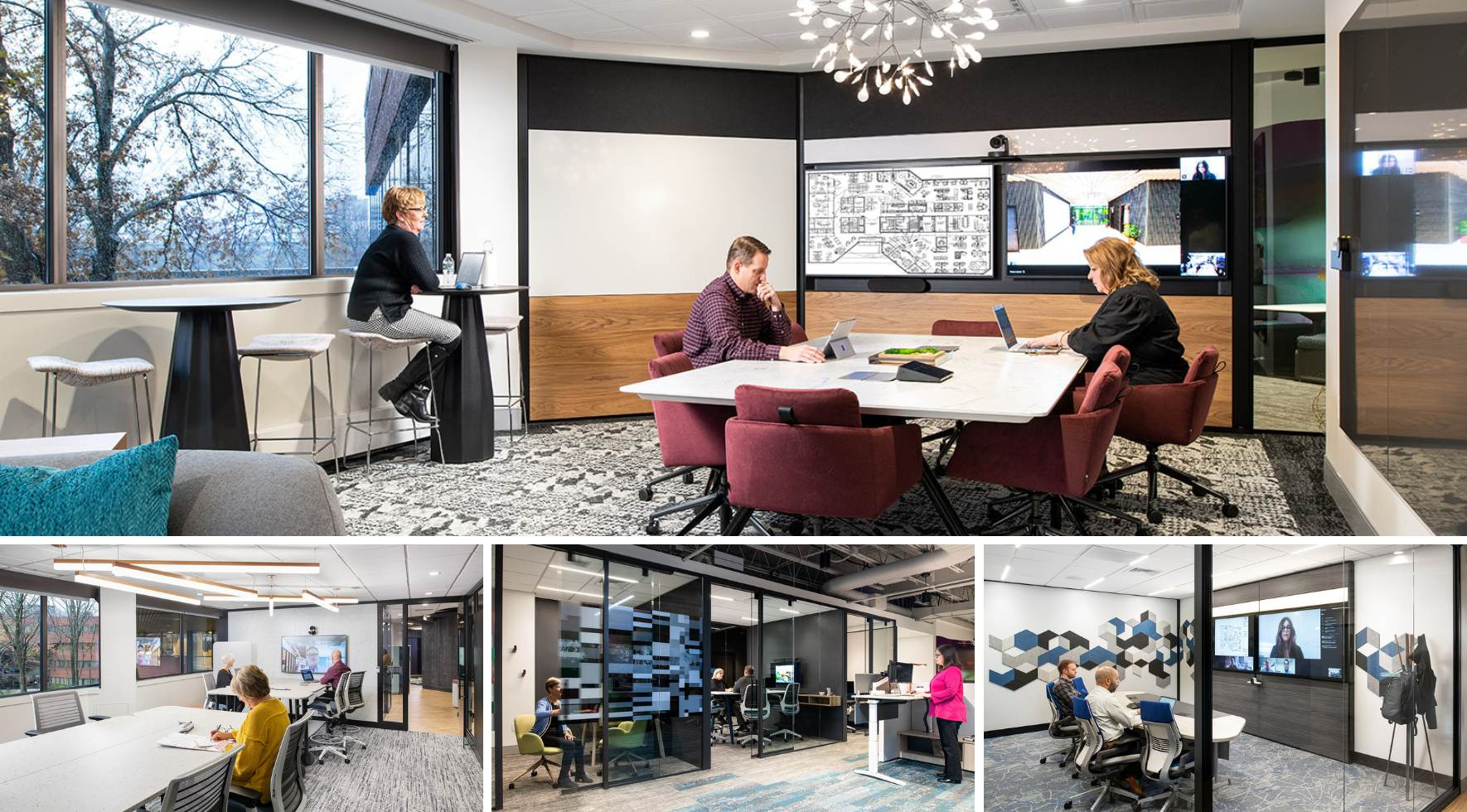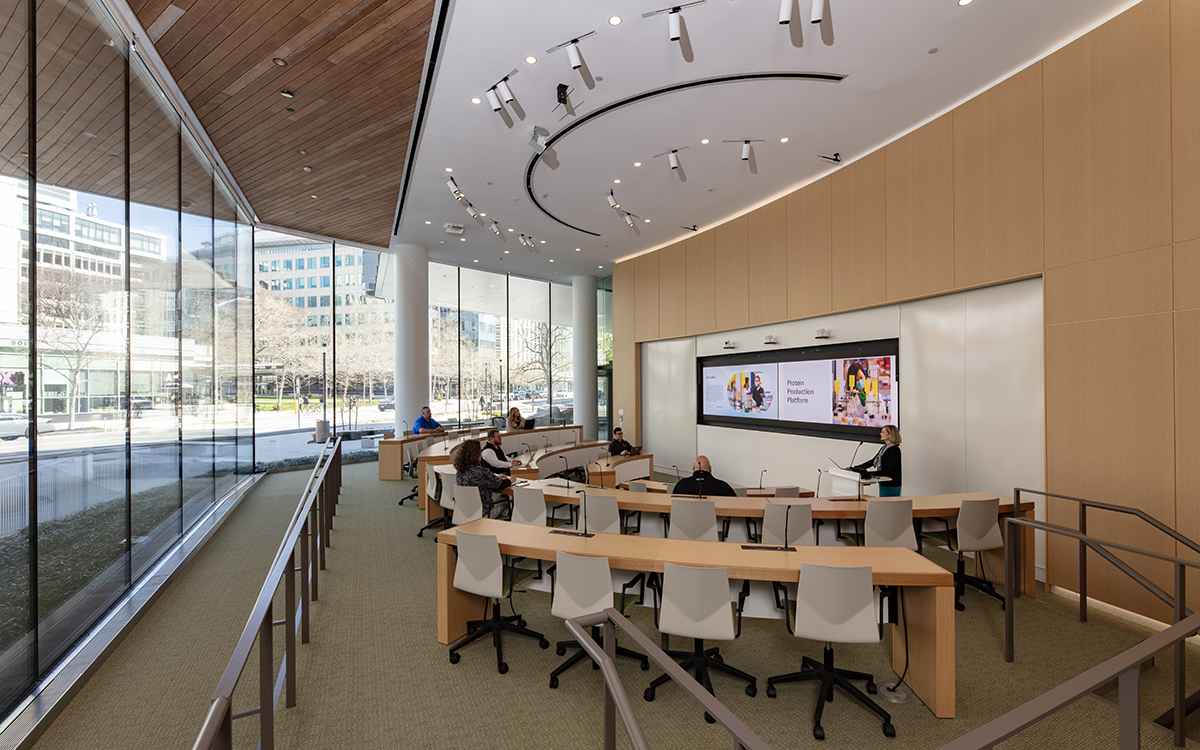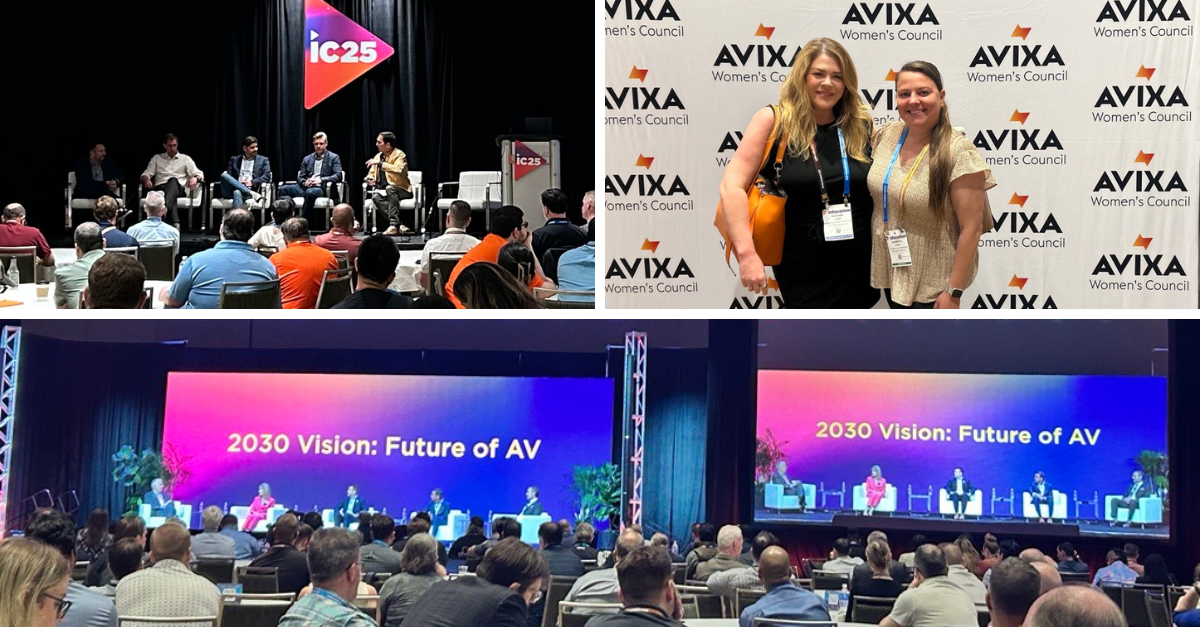As hybrid collaboration becomes more prevalent, organizations are increasingly realizing the importance of having dedicated hybrid meeting spaces.
Steelcase research has shown that most workers feel that their current meeting spaces are inadequate for hybrid collaboration, and a significant number of organizations are planning to invest in creating more hybrid meeting spaces in the future.
By creating effective hybrid meeting spaces, organizations can better support their hybrid workforce and facilitate collaboration between team members, regardless of their physical location.
What is a hybrid meeting room?
A hybrid meeting room is a space that is designed to facilitate both in-person and remote participation in meetings or events. It includes a range of technology and equipment that allows people to participate from anywhere in the world without having to be physically present in the same location.

What do you need for a hybrid meeting room?
Setting up hybrid meeting rooms requires careful planning and consideration of various factors to ensure that both in-person and remote participants have an equal and engaging experience.

Here are 8 considerations for setting up hybrid meeting rooms:
- Evaluate Your Needs: Determine your organization’s needs and goals for hybrid meetings. Identify the types of meetings that will require a hybrid format and the number of participants who will attend remotely and in-person. Will you be conducting video conferences, webinars, presentations, or collaborative brainstorming sessions? Decide what features and functionalities will be required to support these activities.
- Choose the Right Technology: Technology enables seamless collaboration between in-person and remote participants, while improving overall meeting efficiency and productivity. Be sure to invest in the right technology that meets your organization’s needs and is easy to use. This includes video conferencing software, cameras, microphones, speakers, and other tools that provide an optimal experience for both in-person and remote participants.
- Bridge Technology Systems: A standardized platform like Pexip can save organizations time and money while improving collaboration and productivity. With the ability to seamlessly connect different technology systems, teams can focus on what matters most: the content of the meeting itself, rather than the technology behind it.
- Focus on Furniture: The type of furniture and its placement in a hybrid meeting room is crucial to ensure that the technology and room design work together effectively to create an accessible, collaborative environment for both in-person and remote attendees. Comfortable and ergonomic furniture can help attendees stay focused and engaged during the meeting.
- Consider Acoustics: Participants may be joining the meeting from different locations, some physically present in the meeting room while others are remote. This can create several audio challenges like feedback or echoing. Acoustic panels can be placed on walls or ceilings to absorb sound, reducing the amount of reverberation and echoing in the room.
- Prioritize Technology Placement: Microphones and speakers should be placed in strategic locations to ensure that all participants can be heard clearly. This may involve using directional microphones that can be pointed towards individual speakers, or using a conference microphone system that can pick up audio from multiple locations.
- Light the Way: Proper lighting in a hybrid meeting room is important for creating a comfortable and productive environment, reducing eye strain and fatigue, and ensuring that remote participants can clearly see and communicate with in-room participants.
- Emphasize Flexibility: Hybrid meeting rooms need to be flexible enough to accommodate various types of meetings, from formal presentations to casual discussions, and enable seamless communication between in-person and remote participants. This can be achieved through modular furniture or mobile technology that can be quickly moved to fit the needs of the meeting.

By following these steps, you can create a hybrid meeting room that provides an engaging and inclusive experience for all participants, regardless of their location.






